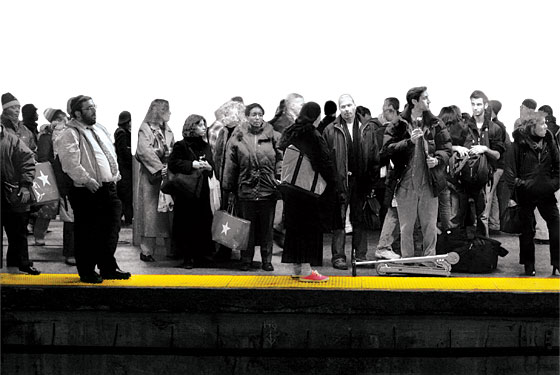
The MTA says the W and Z trains, dozens of bus lines, free student passes, and other services are seriously threatened by budget shortfalls. But MTA announcements of imminent cuts don’t always mean your bus will fail to show up tomorrow; in past budget showdowns, the agency’s threats have often mobilized the political process into action, with the right authority figure (or dollar amount) providing just enough push at the last minute to keep the trains running on time.
1954
SHORTFALL
$7 million a year ($56.7 million in 2009 dollars) for aboveground transportation
THREAT
Heavy cuts to Brooklyn bus and trolley lines.
RESULT
Public pressure arrives quickly, including complaints from Mayor Robert F. Wagner. Though mayors don’t have statutory power over transit, the authority cuts only one bus line and ends night service on another route, saving just $46,000.
1976
SHORTFALL
$30 million
THREAT
Elimination of the Bowling Green–South Ferry shuttle, the Franklin Avenue shuttle, and night service on the A express, B, N, and GG (the present-day G) trains; off-peak trains shortened to as few as four cars; and more.
RESULT
Most cuts are enacted (the Franklin Avenue shuttle is saved after neighborhood opposition). In 1978, Mayor Ed Koch requests trains be restored to their normal number of cars; the MTA rustles up the money to do so. Koch: “Maybe you attract more passengers if they don’t have to run down the platform.”
1981
SHORTFALL
$65 million
THREAT
Curtailing graffiti-removal programs, scrapping the JFK Airport express train, $10 million in bus-service cuts, 25-cent fare hikes.
RESULT
At the (public) request of New York City Transit Authority president John D. Simpson (who ultimately reports to the MTA board), the graffiti/JFK rollbacks and fare hikes are scrapped, but the bus cuts are enacted, with the total number of buses operating dropping from 4,550 to 3,817. 1991
SHORTFALL
$272 million
THREAT
Closing the Transit Museum in Brooklyn, among many other cuts.
RESULT
The museum is saved by an MTA outlay of $45,000 and an increase in admission price from $1.15 to $2, and other measures.
1995
SHORTFALL
$169 million
THREAT
Elimination of eleven express bus lines, cuts to regular bus service, reduced subway-shuttle hours, the shuttering of the Dean Street subway station (which would be the first to close in 33 years), and more.
RESULT
Express-bus service is saved, and the Franklin Avenue shuttle is spared again. But the rest of the cuts land in September, the first major tightening in two decades, reducing service on 71 subway and bus lines. The Dean Street station is closed.
2004
SHORTFALL
$1.3 billion
THREAT
Raising fares, cutting the G train’s run in Queens, cutting bus service.
RESULT
Amid public hearings on the changes, the MTA says most of the cuts won’t be necessary because its financial condition has improved.
TODAY
SHORTFALL
$1.2 billion
THREAT
“The word ‘Draconian’ is not inappropriate,” said the MTA’s then-CEO, Elliot Sander, of the proposed cuts last year.
RESULT
In May, the state legislature passed a rescue package that kept the subway fare from costing more than $2.25 and avoided severe cuts.
BUT WAIT!
In late 2009, Albany chopped $143 million from the MTA budget, and the proposed cuts loomed once more; they’ll be the subject of public hearings and another vote by the MTA’s board in 2010.
Have good intel? Send tips to [email protected].